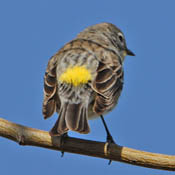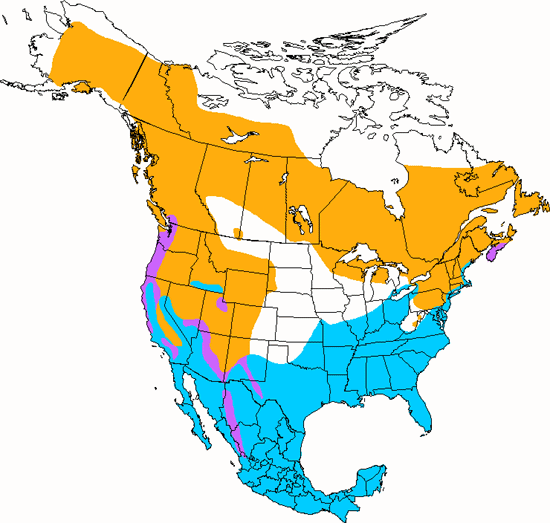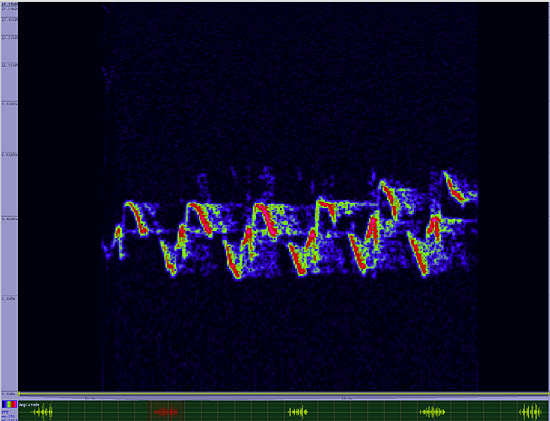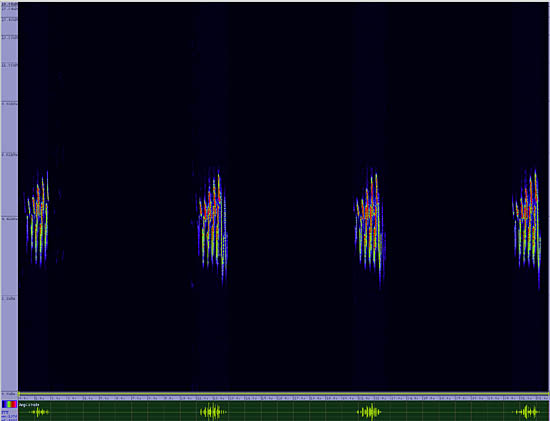Yellow-rumped Warbler
Dendroica coronata

Perching
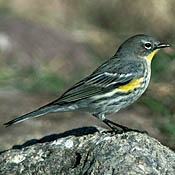
Length: 6 in. (14 cm )
One of the most widespread and common warblers in North America, this species nests in mature coniferous forests or mixed broadleaf and coniferous forests. They feed on insects gleaned from vegetation or hawked from the air usually high in the trees. The cup-shaped nest is made of twigs and shredded bark and placed high on a horizontal branch. During the winter, the Yellow-rumped Warbler moves to more open forested habitats and suburbs and often moves in mixed species flocks. In the winter they often eat fruits. Formerly the eastern white-thorated) population was considered a separate species, the Myrtle Warbler, from the western yellow-throated) Audubon\s Warbler.'
The four-digit banding code is YRWA.
Bibliographic details:
- Article: Yellow-rumped Warbler
- Author(s): Dr. Biology
- Publisher: Arizona State University School of Life Sciences Ask A Biologist
- Site name: ASU - Ask A Biologist
- Date published: 13 Jul, 2017
- Date accessed:
- Link: https://askabiologist.asu.edu/activities/bird/yellow-rumped-warbler
APA Style
Dr. Biology. (Thu, 07/13/2017 - 15:38). Yellow-rumped Warbler. ASU - Ask A Biologist. Retrieved from https://askabiologist.asu.edu/activities/bird/yellow-rumped-warbler
Chicago Manual of Style
Dr. Biology. "Yellow-rumped Warbler". ASU - Ask A Biologist. 13 Jul 2017. https://askabiologist.asu.edu/activities/bird/yellow-rumped-warbler
Dr. Biology. "Yellow-rumped Warbler". ASU - Ask A Biologist. 13 Jul 2017. ASU - Ask A Biologist, Web. https://askabiologist.asu.edu/activities/bird/yellow-rumped-warbler
MLA 2017 Style
Be Part of
Ask A Biologist
By volunteering, or simply sending us feedback on the site. Scientists, teachers, writers, illustrators, and translators are all important to the program. If you are interested in helping with the website we have a Volunteers page to get the process started.



